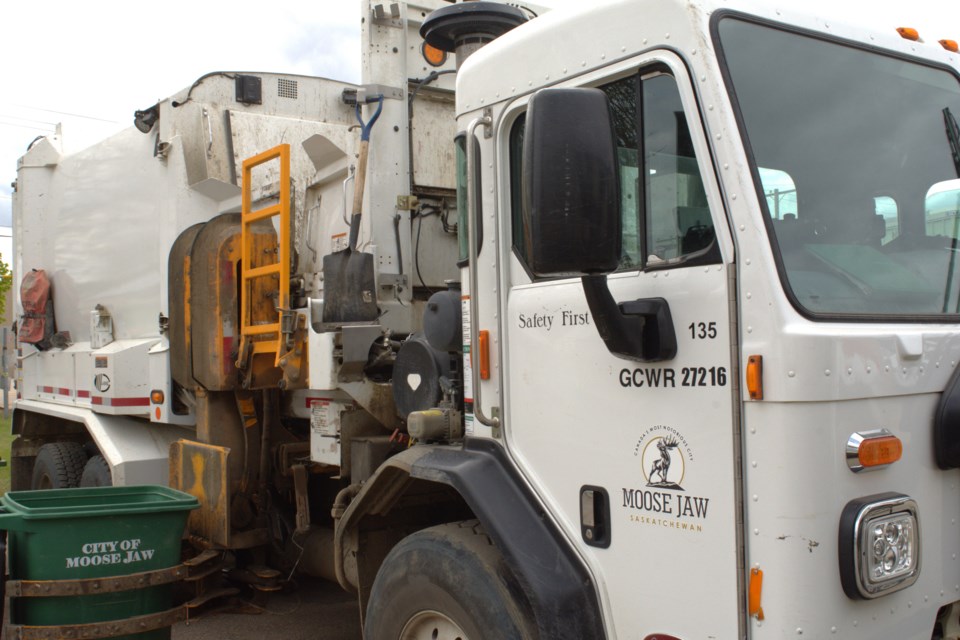MOOSE JAW — City administration is proposing three locations for the new landfill, with one spot on city-owned land near the wastewater treatment plant and two spots on private rural land that could be acquired through annexation.
During its July 28 regular meeting, city council voted 3-2 to authorize administration to seek an exemption or amendment to the Moose Jaw Airport Zoning Regulations, 2002, to remove restrictions on land near the plant (WWTP).
Councillors Heather Eby, Chris Warren and Dawn Luhning were in favour, while councillors Carla Delaurier and Patrick Boyle were opposed. Meanwhile, Coun. Jamey Logan was absent and Mayor James Murdock recused himself because of a family-related conflict of interest.
Furthermore, council voted 5-0 to authorize administration to negotiate with the Rural Municipality of Moose Jaw to confirm that 16 pieces of land — known as “location 8” — north of the city be annexed and establish an alteration of boundaries agreement for those lands.
Also, council voted 4-1 to authorize administration to negotiate with the RM to confirm that 26 pieces of land — known as “location 7” — north of the city be annexed and establish an alteration of boundaries agreement for those lands.
Boyle was opposed.
Moreover, council voted 5-0 to have the negotiations include a land use and zoning framework and annexation compensation. However, if negotiations fail to “result in a complementary resolution,” administration can proceed with an application to the Saskatchewan Municipal Board for adjudication, including mediation, if required.
By the numbers
The current landfill is almost 100 years old, while city hall says it will run out of space by 2030. Administration wants to build a new solid waste management venue (SWMV) with a 75-year lifespan, but requires roughly 156.09 hectares (390.23 acres).
The concept design report shows the new landfill would have a capacity of 3.75 million tonnes or 6.25 million cubic metres of airspace, while the total operational lifespan cost would be $133 million.
Meanwhile, the council report showed that between 2021 and 2024, the landfill collected between 38,432 tonnes and 83,379 tonnes of waste, which generated between $2,983,456.17 and $5,477,741 in revenue for the city.
During the first six months of 2025, the data show that the landfill collected 19,302 tonnes of waste, with 74 per cent coming city residents.
Three possible locations
Administration identified areas surrounding the WWTP and lagoons “as the operational preference for a future solid waste facility,” but developing this area has been limited due to a no-fly zone northeast of the plant, the report said.
There are operational advantages to putting the SWMV in this location, including access to existing stockpiled materials and efficient materials disposal, which could support future industrial development, the document continued.
However, from a development perspective, the city says the lands around the lagoons “are less desirable” than those located further north in the agri-food industrial park. So, the city will work with 15 Wing Airbase to revise the airport zoning regulations.
Also, the city does not need to annex this land since it is within city limits.
The city’s second priority location is “location 8” — adjacent to the land (location 7) officials originally wanted — and meets technical criteria and aligns with operational preferences, including location and proximity, the report said. This location is also supported by a traffic impact assessment.
Administration wants to annex locations 7 and 8.
The report noted that there are no financial implications for expropriating the lands or extra annexation costs. However, the city would have to pay the RM at least 15 times the current property taxes as “tax loss compensation.”
“This amount can be negotiated and structured as a phased payment over time to reduce the financial impact, depending on the final terms,” the report added.
Background
Municipal officials had hoped to construct the new landfill north of the city on agricultural land that the Truman Bailey family owned, but the RM rejected the discretionary use application in June 2024; a rural ratepayers' group discouraged the RM council from approving the project location/. This forced city hall to continue the search for a suitable site.
In June 2025, the mayor’s office contacted the Ministry of Environment about the city’s interest in exploring waste-to-energy initiatives and asked for a temporary extension at the current site while the municipality explored alternative options, the report said.
However, the ministry said the current site is not suitable for expansion for several reasons and would only consider a “transitory expansion” to bridge the two projects, the document continued. The ministry also said it was exploring waste-to-energy initiatives and had not set a timeline to create a supporting framework.
Advice from a contractor
The city hired Wallace Insights Inc. to review the situation as part of an “impartial third-party perspective” and provide a memo about evaluating land options, recommending preferred sites based on the available data and outlining a path for land acquisition, the report said.
Wallace Insights said that the city developing a landfill rather than contracting out such services offered several benefits, including long-term cost control, owning the asset, controlling tipping fees and creating jobs, the report continued.
Furthermore, the contractor said the city should prioritize long-term cost implications of having a landfill over worries about short-term construction costs, the document continued. This is because in 25 years, operating costs would double the capital cost to build a new landfill.
“Therefore, strategies that enhance long-term affordability for taxpayers must be considered when determining the facility’s location,” the report stated.
To protect ratepayers and manage long-term operating costs, Wallace Insights recommended that city hall find a city-owned location near industrial-zoned lands to enable future diversion initiatives and minimize garbage collection costs like fuel consumption and travel time. Also, the city should explore diversion opportunities to preserve the new landfill’s airspace.
MooseJawToday.com will feature comments from council in a separate article.
The next regular council meeting is Monday, Aug. 11.




